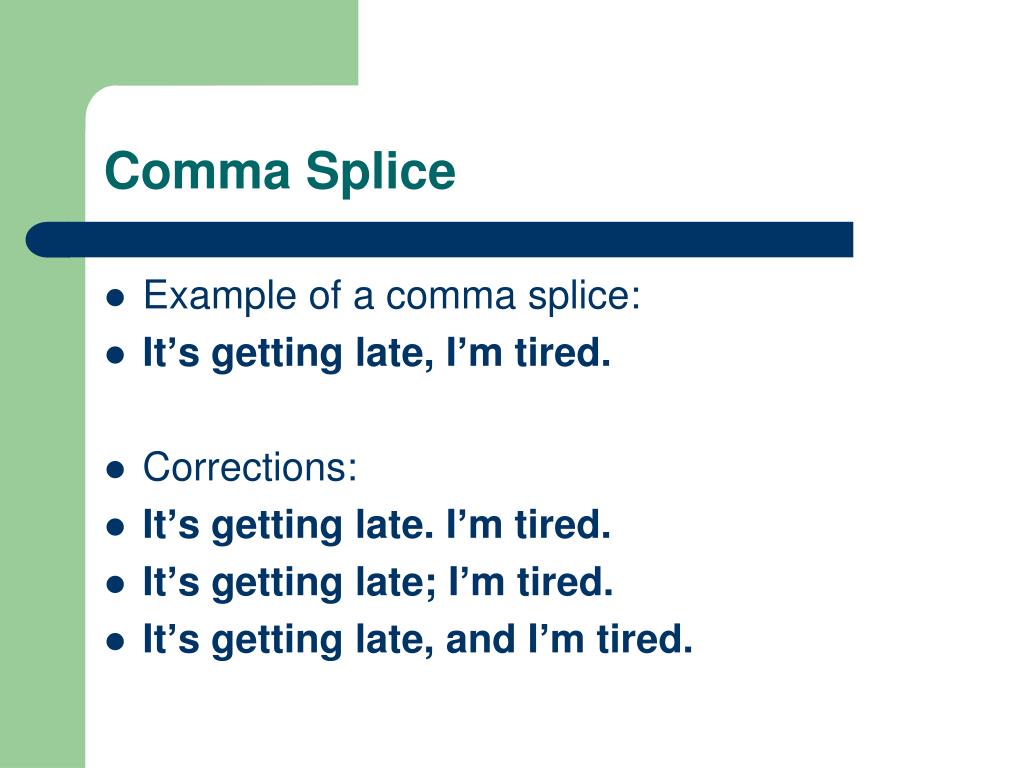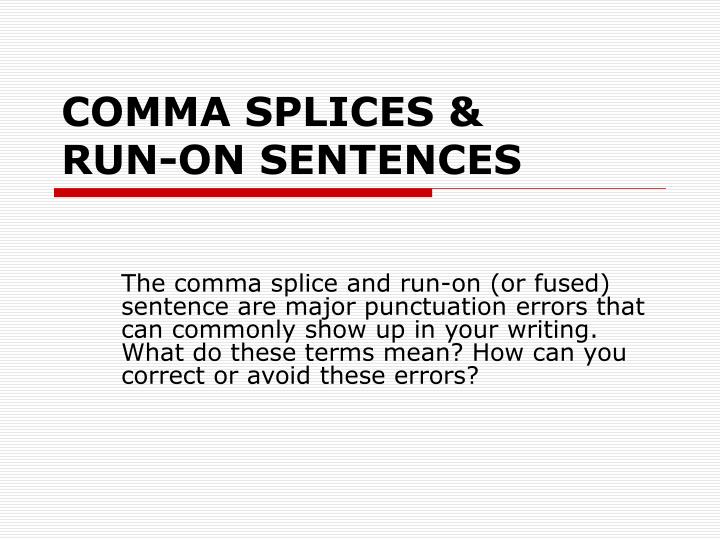
I’m sorry, but she probably did explain that exception. I hear you saying, “Now wait a minute! My English teacher very clearly taught us to use commas to join clauses.”

Take these two sentences: She is a great basketball player. If one of them is not a standalone sentence, it is a dependent clause, and you do not add the comma. So, use the comma before the conjunction (and, but, or) if the clauses are standalone sentences.

A comma should be placed before a conjunction only if it is at the beginning of an independent clause. However, we don’t always automatically use a comma before the word “and.” This is where it gets confusing.Ĭompound sentences combine two separate ideas (clauses) into one compact package. They are called coordinating conjunctions. This clause introduces the clause that follows it, and its meaning is dependent on that following clause.Ī comma should be used before these conjunctions: and, but, for, nor, yet, or, and so to separate two independent clauses. I italicized the introductory clause in the above sentence to show that it is not a stand-alone sentence. In the first sentence, “because he was afraid” isn’t necessary.We do use commas to set off introductory clauses: Do not insert commas where you think it should pause because every reader sees the narrative differently.Never insert commas “where you take a breath” because everyone breathes differently.Readers expect to find commas separating certain clauses. The dog likes to ride shotgun.īut what do we join with commas? Commas are the universally acknowledged pausing and joining symbol. Same two thoughts, written correctly: My car is a blue Chevy Malibu, and I like it. If you join independent clauses with commas and we all die, you’ll only have yourself to blame because I did warn you.Ĭomma Splice: My car is a blue Chevy Malibu and I like it, the dog likes to ride shotgun. You do not join independent clauses (clauses that can stand alone as separate sentences) with commas as that creates a rift in the space/time continuum: the Dreaded Comma Splice. However, they see their work is a little choppy, so they join the independent clauses with commas. Some authors will do anything to avoid using a semicolon, which is ridiculous. My rule for you is this: Semicolons should not be used if you are in doubt. I don’t dislike them, as some editors do, but I think they are too easily abused and misused. My personal inclination is to find alternatives to both semicolons and em dashes, as they can easily create run-on sentences. If time is the issue in both clauses and you want it to be once sentence, use a semicolon, reword it to say, “The Dairy Queen is about to close it’s nearly half past five.”Īlternatively you can join them with the em dash. They close at eight, and it’s nearly half past five. Two separate ideas done right, assuming the mention of time is important: We should go to the Dairy Queen soon. The second sentence is a completely different idea: it’s telling you the time. The first sentence is one whole idea: they want to go somewhere. Two separate ideas done wrong: We should go to the Dairy Queen it’s nearly half past five. Use your creativity and reword those little sentences, so they aren’t choppy. You’re an author, for the love of Tolstoy. If your two short sentences don’t relate to each other, use a period at the end of each clause and make them separate sentences. In other words, they must be two short sentences expanding on ONE idea. If you join two clauses with a semicolon, each clause must be a complete sentence, and they must relate to each other.

This joining punctuation is not complicated, once you know the one rule about when to use semicolons: I have covered all of these before, so if you’re already up on these rules, thank you for stopping by and happy writing!įirst up, the semicolon. My previous post on the em dash brought up some interesting comments, so I thought we should review the rules for the punctuation that we use and abuse so regularly.


 0 kommentar(er)
0 kommentar(er)
